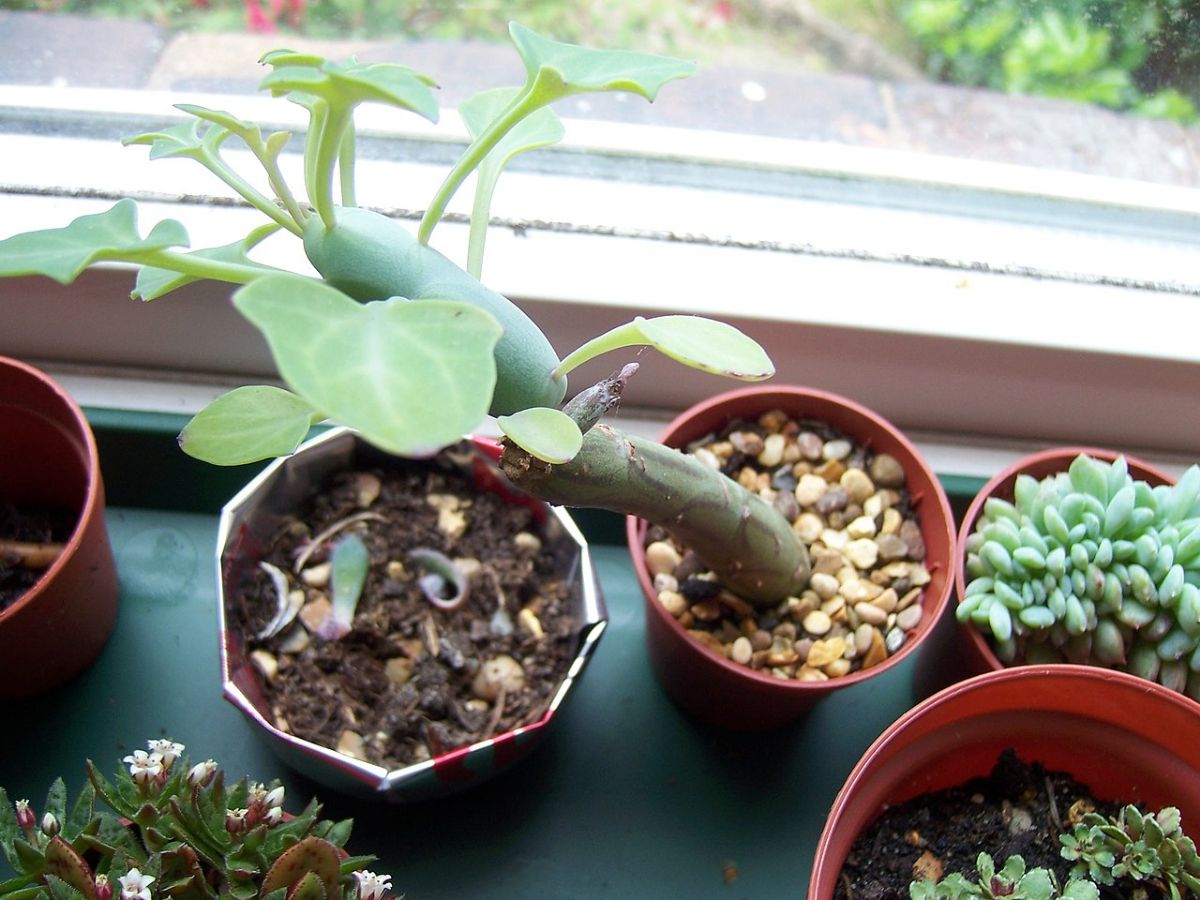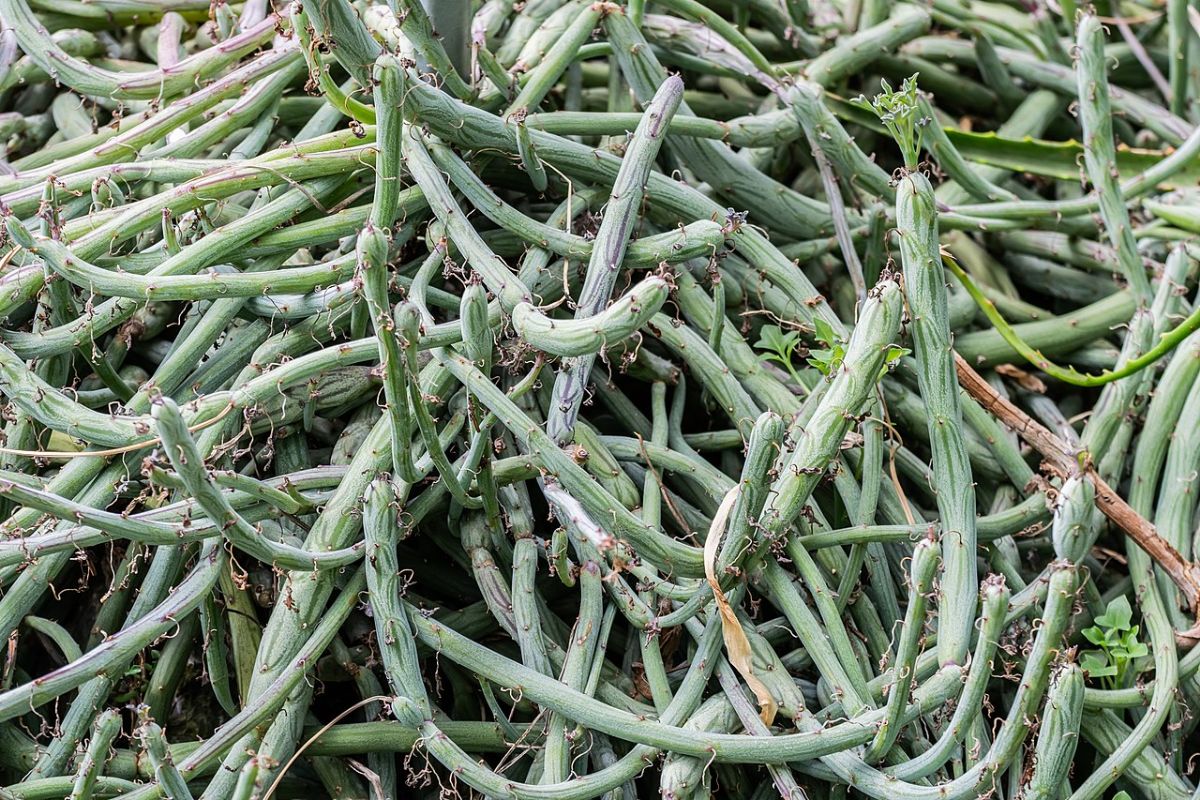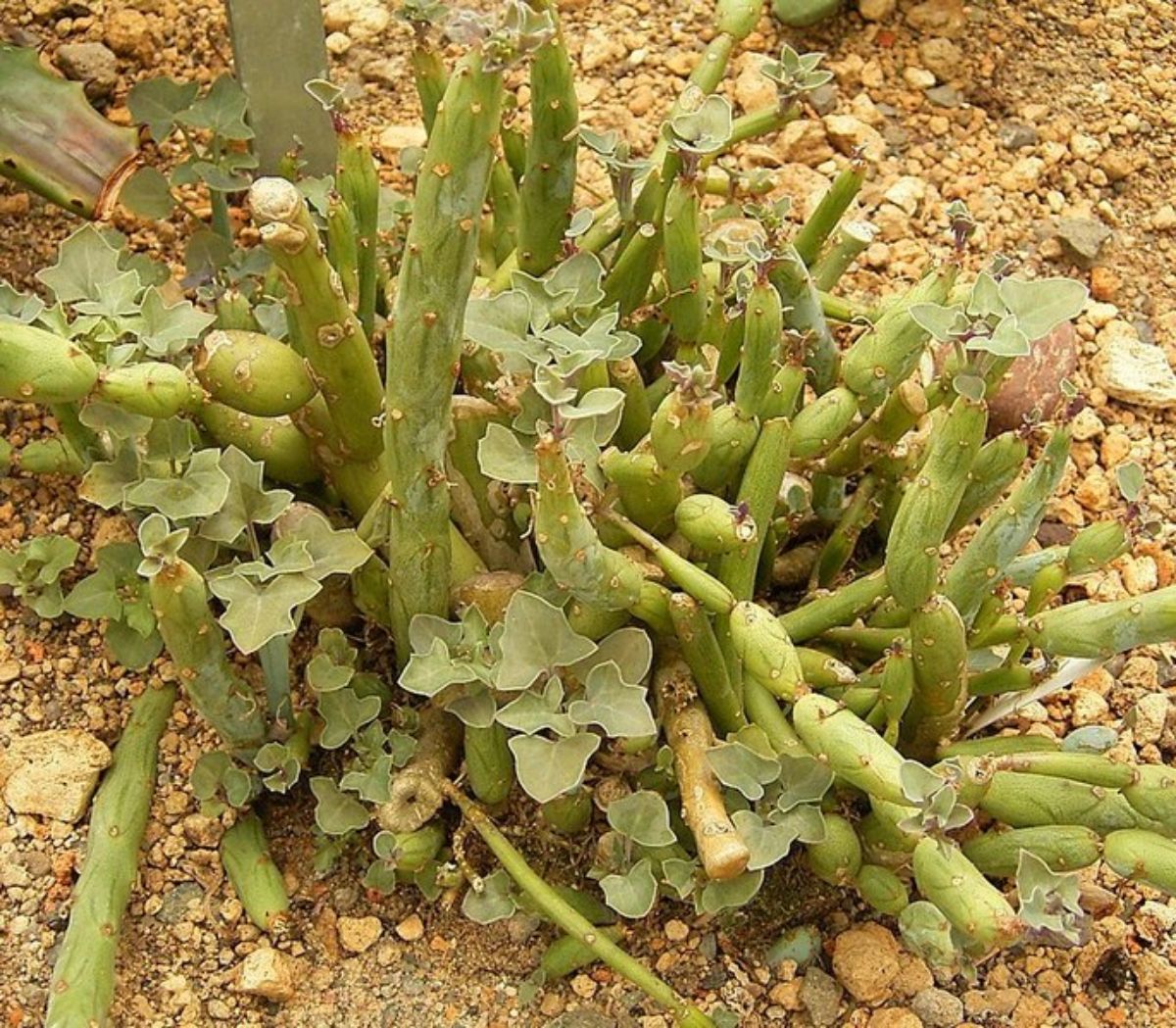
There are succulent or non-cactus succulent plants that are really curious: some look like stones, and others, as is the case with Senecio articulatus, they can remind us of vegetable sausages. And it is that its stems are like that, tubular and thin.
Do you want to know how it is taken care of? Coming up next, we tell you.
Origin and characteristics

It is a herbaceous succulents native to South Africa known as candle plant that develops stems up to 30 centimeters high by about 1 centimeter thick, green in color. Its green leaves are small, barely 1 centimeter long, and have an arrow shape. the flower of Senecio articulatus it can be purple-pink or white, and it gives off an aroma that is not very pleasant.
The growth rate of this species is quite fast, but As it does not need much space, it is ideal to have in pots throughout its life., either as an individual plant or in compositions.
Other names by which the Senecio plant is known are candle plant, Hot Dog cactus, sausage plant. They are names that refer to its physical form since we are talking about a plant that seems to grow as if it were a roller or a sausage.
As a curiosity, but also as a warning, we must tell you that it is a quite toxic plant. In fact, it is recommended that, when handling it, you always do it with gloves and wash your hands afterwards to avoid problems. This implies that, if you have pets, it is not the most suitable to have, especially if your animals tend to approach plants and/or bite them.
What are their cares?

If you want to have a copy, we recommend that you provide it with the following care:
Temperature and location
El Senecio articulatus is a plant that It must be outside, in full sun. In the event that the temperature drops below 0 degrees, it must be protected inside the home or in a greenhouse.
It is important, for the plant to develop correctly, that it pass at least 6 hours of direct sunlight. Otherwise, the stems may grow weaker and even break under their weight. In summer, if you live in a very hot area, it is preferable to protect it during the hours of greatest solar incidence to prevent the leaves from being damaged or turning brown due to burns.
Substratum
It is advisable to fill the pot with previously washed river sand, pumice (on sale here), or akadama (for sale here). The use of black peat could harm it, since it would not allow it to root well.
One of the must have features the land you use is that it is very light and draining. Since this plant does not like water too much, you make sure that there are no accumulations of water that can damage the roots.
Irrigation
About twice a week in the middle of summer, and once every 10-15 days the rest of the year.
This will really depend on where you live and where it is because It is not a plant that needs much watering. Only when you see that the land is dry should you water. Keep in mind that it tolerates a drought better than abusing water and flooding it. Therefore, it is better to add a small amount, even in that period of time that we are talking about, so that it does not absorb a lot of moisture.
You will notice that the plant needs more water if the trunks or stems look too light green or soft. Although the latter can also affect if there is more moisture. It is best to stick a finger in the soil and if you notice moisture, do not water. In winter, many of these plants are not watered to avoid problems.
Subscriber
In spring and summer with fertilizers for cacti and other succulents, following the instructions specified on the package.
Rusticity
It does not resist the cold. In fact, it is said that the plant is fine up to 7 degrees. As soon as the thermometer goes down, the senecio will suffer. That is why it is recommended to protect it in winter.
Pruning
Although in the case of succulents pruning is not very common, in this case with the senecio plant you can carry it out, both to spend the winter and to control its growth (and incidentally have cuttings).
When cutting, you must always do it where the stem is firm and usually done in early spring to encourage growth. However, also in autumn, to prepare the plant, it can be cut as long as the plant (and the cut) is protected from low temperatures to avoid diseases or problems.
Multiplication

The Senecio plant is one of the easiest to multiply since you can do it in several different ways. One of the first is through seeds. You can get these from the flowers and they must be planted and wait for them to come out. Being a fast-growing plant, you don't have to wait long to see the first sprouts, but it is important to keep the soil moist during that time, since for them to germinate they need constant humidity as well as a warm temperature to achieve it (otherwise Otherwise they may take longer or not come out).
Another way you have to multiply the plant is through the cuttings. That is, cutting a part of the plant and planting it in a pot with sandy soil since it is the best to keep it moist and develop roots. Of course, it is convenient that the cuttings are always cut in the growing season, which in this plant is from early spring to autumn. In this way, you ensure that you have more success.
Finally, another of the ways to reproduce the plant is by dividing it. That is, in early spring you can cut the plant into two or more parts and place each one in a different pot. It is one of the ways that many have to prevent their growth from getting out of control and at the same time to have several plants that will behave the same. It is important to control that there are no dangers of frost so that the plants do not suffer. Keep in mind that this is very stressful and will affect your health a bit, so do it making sure of the time and temperature.
Plagues and diseases
Another important point in the care of the senecio plant is pests and diseases. Although we are talking about a succulent, and that is strong enough to resist, the truth is that in terms of pests and diseases you have to be a little careful.
In general, it does not affect him almost at all, but they are prone to being eaten by insects, as well as rabbits. To avoid it, it would be enough to throw some liquid or spray that was not pleasant and you will prevent them from approaching it.
Other pests to be aware of are mealybugs, that they do affect you.
In terms of diseases, one of the most important is botrytis. We are talking about a gray mold that can spread in the plague causing necrosis. Normally it starts in the area of the flowers and leaves, and little by little it reaches the buds, buds, stem... It is not easy to distinguish because many times we think that it is something natural from aged parts of the plant, but it can kill it .
The solution to this problem is to remove the affected parts and apply a remedy to those that remain to try to prevent it from spreading further. The most recommended are milk fungicides, neem oil and bicarbonate or purin from nettles and/or horsetail.
Problems with irrigation, lighting and temperature they can also negatively affect the health of the Senecio plant.
What did you think of this curious succulent?
Thanks for the excellent information.
Thank you very much.